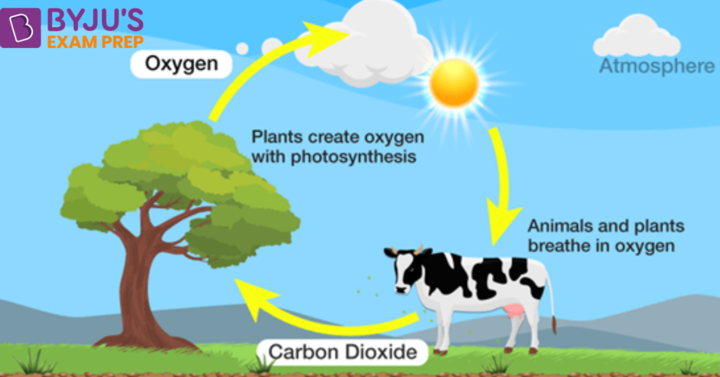What is Oxygen Cycle? Explain with Diagram
By BYJU'S Exam Prep
Updated on: November 9th, 2023
The Oxygen Cycle also known as the biogeochemical cycle, is the process by which oxygen is transferred from living systems to the environment. The procedure contributes to keeping the air’s oxygen content at a healthy level. The oxygen cycle process is therefore extremely important.
Table of content
Oxygen Cycle Definition and Diagram
The oxygen cycle is the cycle of oxygen wherein oxygen gets transferred between various life forms and their surrounding environment, also referred to as the biogeochemical cycle.

The process plays an important role in keeping the air’s oxygen maintained at a healthy level. Therefore the process of the entire oxygen cycle plays a significant part in the ecosystem.
Uses of Oxygen Cycle
During photosynthesis, sunlight causes water molecules to deposit, producing a significant amount of oxygen. Through respiration (breathing) or transpiration, the movement of water is how oxygen is released into the atmosphere. The main uses of oxygen are mentioned below:
- It is the main by-product of Photosynthesis.
- It is necessary for the oxidation process of carbohydrates which ultimately releases energy, carbon dioxide, and water.
- Oxygen is found in a variety of forms and combinations with other chemicals.
- It combines with nitrogen to form nitrates.
- Oxygen also blends with other elements to create oxides, such as iron oxide and aluminum oxide.
Related Questions:
